Jewelry
Electronics
Coins and Medals
Photography
Industrial Manufacturing
Consumer Goods
Automotive
Medical
Solar Energy
Telecommunications
Bars
Coins
Powder
Foil
Wire
Sterling Silver
Fine Silver
Coin Silver
North America
Europe
South America
Asia Pacific
Middle East and Africa
North America Outlook (USD Billion, 2019-2035)
North America Silver Market by Application Type
Jewelry
Electronics
Coins and Medals
Photography
Industrial Manufacturing
North America Silver Market by End Use Industry Type
Consumer Goods
Automotive
Medical
Solar Energy
Telecommunications
North America Silver Market by Form Type
Bars
Coins
Powder
Foil
Wire
North America Silver Market by Purity Type
Sterling Silver
Fine Silver
Coin Silver
North America Silver Market by Regional Type
US
Canada
US Outlook (USD Billion, 2019-2035)
US Silver Market by Application Type
Jewelry
Electronics
Coins and Medals
Photography
Industrial Manufacturing
US Silver Market by End Use Industry Type
Consumer Goods
Automotive
Medical
Solar Energy
Telecommunications
US Silver Market by Form Type
Bars
Coins
Powder
Foil
Wire
US Silver Market by Purity Type
Sterling Silver
Fine Silver
Coin Silver
CANADA Outlook (USD Billion, 2019-2035)
CANADA Silver Market by Application Type
Jewelry
Electronics
Coins and Medals
Photography
Industrial Manufacturing
CANADA Silver Market by End Use Industry Type
Consumer Goods
Automotive
Medical
Solar Energy
Telecommunications
CANADA Silver Market by Form Type
Bars
Coins
Powder
Foil
Wire
CANADA Silver Market by Purity Type
Sterling Silver
Fine Silver
Coin Silver
Europe Outlook (USD Billion, 2019-2035)
Europe Silver Market by Application Type
Jewelry
Electronics
Coins and Medals
Photography
Industrial Manufacturing
Europe Silver Market by End Use Industry Type
Consumer Goods
Automotive
Medical
Solar Energy
Telecommunications
Europe Silver Market by Form Type
Bars
Coins
Powder
Foil
Wire
Europe Silver Market by Purity Type
Sterling Silver
Fine Silver
Coin Silver
Europe Silver Market by Regional Type
Germany
UK
France
Russia
Italy
Spain
Rest of Europe
GERMANY Outlook (USD Billion, 2019-2035)
GERMANY Silver Market by Application Type
Jewelry
Electronics
Coins and Medals
Photography
Industrial Manufacturing
GERMANY Silver Market by End Use Industry Type
Consumer Goods
Automotive
Medical
Solar Energy
Telecommunications
GERMANY Silver Market by Form Type
Bars
Coins
Powder
Foil
Wire
GERMANY Silver Market by Purity Type
Sterling Silver
Fine Silver
Coin Silver
UK Outlook (USD Billion, 2019-2035)
UK Silver Market by Application Type
Jewelry
Electronics
Coins and Medals
Photography
Industrial Manufacturing
UK Silver Market by End Use Industry Type
Consumer Goods
Automotive
Medical
Solar Energy
Telecommunications
UK Silver Market by Form Type
Bars
Coins
Powder
Foil
Wire
UK Silver Market by Purity Type
Sterling Silver
Fine Silver
Coin Silver
FRANCE Outlook (USD Billion, 2019-2035)
FRANCE Silver Market by Application Type
Jewelry
Electronics
Coins and Medals
Photography
Industrial Manufacturing
FRANCE Silver Market by End Use Industry Type
Consumer Goods
Automotive
Medical
Solar Energy
Telecommunications
FRANCE Silver Market by Form Type
Bars
Coins
Powder
Foil
Wire
FRANCE Silver Market by Purity Type
Sterling Silver
Fine Silver
Coin Silver
RUSSIA Outlook (USD Billion, 2019-2035)
RUSSIA Silver Market by Application Type
Jewelry
Electronics
Coins and Medals
Photography
Industrial Manufacturing
RUSSIA Silver Market by End Use Industry Type
Consumer Goods
Automotive
Medical
Solar Energy
Telecommunications
RUSSIA Silver Market by Form Type
Bars
Coins
Powder
Foil
Wire
RUSSIA Silver Market by Purity Type
Sterling Silver
Fine Silver
Coin Silver
ITALY Outlook (USD Billion, 2019-2035)
ITALY Silver Market by Application Type
Jewelry
Electronics
Coins and Medals
Photography
Industrial Manufacturing
ITALY Silver Market by End Use Industry Type
Consumer Goods
Automotive
Medical
Solar Energy
Telecommunications
ITALY Silver Market by Form Type
Bars
Coins
Powder
Foil
Wire
ITALY Silver Market by Purity Type
Sterling Silver
Fine Silver
Coin Silver
SPAIN Outlook (USD Billion, 2019-2035)
SPAIN Silver Market by Application Type
Jewelry
Electronics
Coins and Medals
Photography
Industrial Manufacturing
SPAIN Silver Market by End Use Industry Type
Consumer Goods
Automotive
Medical
Solar Energy
Telecommunications
SPAIN Silver Market by Form Type
Bars
Coins
Powder
Foil
Wire
SPAIN Silver Market by Purity Type
Sterling Silver
Fine Silver
Coin Silver
REST OF EUROPE Outlook (USD Billion, 2019-2035)
REST OF EUROPE Silver Market by Application Type
Jewelry
Electronics
Coins and Medals
Photography
Industrial Manufacturing
REST OF EUROPE Silver Market by End Use Industry Type
Consumer Goods
Automotive
Medical
Solar Energy
Telecommunications
REST OF EUROPE Silver Market by Form Type
Bars
Coins
Powder
Foil
Wire
REST OF EUROPE Silver Market by Purity Type
Sterling Silver
Fine Silver
Coin Silver
APAC Outlook (USD Billion, 2019-2035)
APAC Silver Market by Application Type
Jewelry
Electronics
Coins and Medals
Photography
Industrial Manufacturing
APAC Silver Market by End Use Industry Type
Consumer Goods
Automotive
Medical
Solar Energy
Telecommunications
APAC Silver Market by Form Type
Bars
Coins
Powder
Foil
Wire
APAC Silver Market by Purity Type
Sterling Silver
Fine Silver
Coin Silver
APAC Silver Market by Regional Type
China
India
Japan
South Korea
Malaysia
Thailand
Indonesia
Rest of APAC
CHINA Outlook (USD Billion, 2019-2035)
CHINA Silver Market by Application Type
Jewelry
Electronics
Coins and Medals
Photography
Industrial Manufacturing
CHINA Silver Market by End Use Industry Type
Consumer Goods
Automotive
Medical
Solar Energy
Telecommunications
CHINA Silver Market by Form Type
Bars
Coins
Powder
Foil
Wire
CHINA Silver Market by Purity Type
Sterling Silver
Fine Silver
Coin Silver
INDIA Outlook (USD Billion, 2019-2035)
INDIA Silver Market by Application Type
Jewelry
Electronics
Coins and Medals
Photography
Industrial Manufacturing
INDIA Silver Market by End Use Industry Type
Consumer Goods
Automotive
Medical
Solar Energy
Telecommunications
INDIA Silver Market by Form Type
Bars
Coins
Powder
Foil
Wire
INDIA Silver Market by Purity Type
Sterling Silver
Fine Silver
Coin Silver
JAPAN Outlook (USD Billion, 2019-2035)
JAPAN Silver Market by Application Type
Jewelry
Electronics
Coins and Medals
Photography
Industrial Manufacturing
JAPAN Silver Market by End Use Industry Type
Consumer Goods
Automotive
Medical
Solar Energy
Telecommunications
JAPAN Silver Market by Form Type
Bars
Coins
Powder
Foil
Wire
JAPAN Silver Market by Purity Type
Sterling Silver
Fine Silver
Coin Silver
SOUTH KOREA Outlook (USD Billion, 2019-2035)
SOUTH KOREA Silver Market by Application Type
Jewelry
Electronics
Coins and Medals
Photography
Industrial Manufacturing
SOUTH KOREA Silver Market by End Use Industry Type
Consumer Goods
Automotive
Medical
Solar Energy
Telecommunications
SOUTH KOREA Silver Market by Form Type
Bars
Coins
Powder
Foil
Wire
SOUTH KOREA Silver Market by Purity Type
Sterling Silver
Fine Silver
Coin Silver
MALAYSIA Outlook (USD Billion, 2019-2035)
MALAYSIA Silver Market by Application Type
Jewelry
Electronics
Coins and Medals
Photography
Industrial Manufacturing
MALAYSIA Silver Market by End Use Industry Type
Consumer Goods
Automotive
Medical
Solar Energy
Telecommunications
MALAYSIA Silver Market by Form Type
Bars
Coins
Powder
Foil
Wire
MALAYSIA Silver Market by Purity Type
Sterling Silver
Fine Silver
Coin Silver
THAILAND Outlook (USD Billion, 2019-2035)
THAILAND Silver Market by Application Type
Jewelry
Electronics
Coins and Medals
Photography
Industrial Manufacturing
THAILAND Silver Market by End Use Industry Type
Consumer Goods
Automotive
Medical
Solar Energy
Telecommunications
THAILAND Silver Market by Form Type
Bars
Coins
Powder
Foil
Wire
THAILAND Silver Market by Purity Type
Sterling Silver
Fine Silver
Coin Silver
INDONESIA Outlook (USD Billion, 2019-2035)
INDONESIA Silver Market by Application Type
Jewelry
Electronics
Coins and Medals
Photography
Industrial Manufacturing
INDONESIA Silver Market by End Use Industry Type
Consumer Goods
Automotive
Medical
Solar Energy
Telecommunications
INDONESIA Silver Market by Form Type
Bars
Coins
Powder
Foil
Wire
INDONESIA Silver Market by Purity Type
Sterling Silver
Fine Silver
Coin Silver
REST OF APAC Outlook (USD Billion, 2019-2035)
REST OF APAC Silver Market by Application Type
Jewelry
Electronics
Coins and Medals
Photography
Industrial Manufacturing
REST OF APAC Silver Market by End Use Industry Type
Consumer Goods
Automotive
Medical
Solar Energy
Telecommunications
REST OF APAC Silver Market by Form Type
Bars
Coins
Powder
Foil
Wire
REST OF APAC Silver Market by Purity Type
Sterling Silver
Fine Silver
Coin Silver
South America Outlook (USD Billion, 2019-2035)
South America Silver Market by Application Type
Jewelry
Electronics
Coins and Medals
Photography
Industrial Manufacturing
South America Silver Market by End Use Industry Type
Consumer Goods
Automotive
Medical
Solar Energy
Telecommunications
South America Silver Market by Form Type
Bars
Coins
Powder
Foil
Wire
South America Silver Market by Purity Type
Sterling Silver
Fine Silver
Coin Silver
South America Silver Market by Regional Type
Brazil
Mexico
Argentina
Rest of South America
BRAZIL Outlook (USD Billion, 2019-2035)
BRAZIL Silver Market by Application Type
Jewelry
Electronics
Coins and Medals
Photography
Industrial Manufacturing
BRAZIL Silver Market by End Use Industry Type
Consumer Goods
Automotive
Medical
Solar Energy
Telecommunications
BRAZIL Silver Market by Form Type
Bars
Coins
Powder
Foil
Wire
BRAZIL Silver Market by Purity Type
Sterling Silver
Fine Silver
Coin Silver
MEXICO Outlook (USD Billion, 2019-2035)
MEXICO Silver Market by Application Type
Jewelry
Electronics
Coins and Medals
Photography
Industrial Manufacturing
MEXICO Silver Market by End Use Industry Type
Consumer Goods
Automotive
Medical
Solar Energy
Telecommunications
MEXICO Silver Market by Form Type
Bars
Coins
Powder
Foil
Wire
MEXICO Silver Market by Purity Type
Sterling Silver
Fine Silver
Coin Silver
ARGENTINA Outlook (USD Billion, 2019-2035)
ARGENTINA Silver Market by Application Type
Jewelry
Electronics
Coins and Medals
Photography
Industrial Manufacturing
ARGENTINA Silver Market by End Use Industry Type
Consumer Goods
Automotive
Medical
Solar Energy
Telecommunications
ARGENTINA Silver Market by Form Type
Bars
Coins
Powder
Foil
Wire
ARGENTINA Silver Market by Purity Type
Sterling Silver
Fine Silver
Coin Silver
REST OF SOUTH AMERICA Outlook (USD Billion, 2019-2035)
REST OF SOUTH AMERICA Silver Market by Application Type
Jewelry
Electronics
Coins and Medals
Photography
Industrial Manufacturing
REST OF SOUTH AMERICA Silver Market by End Use Industry Type
Consumer Goods
Automotive
Medical
Solar Energy
Telecommunications
REST OF SOUTH AMERICA Silver Market by Form Type
Bars
Coins
Powder
Foil
Wire
REST OF SOUTH AMERICA Silver Market by Purity Type
Sterling Silver
Fine Silver
Coin Silver
MEA Outlook (USD Billion, 2019-2035)
MEA Silver Market by Application Type
Jewelry
Electronics
Coins and Medals
Photography
Industrial Manufacturing
MEA Silver Market by End Use Industry Type
Consumer Goods
Automotive
Medical
Solar Energy
Telecommunications
MEA Silver Market by Form Type
Bars
Coins
Powder
Foil
Wire
MEA Silver Market by Purity Type
Sterling Silver
Fine Silver
Coin Silver
MEA Silver Market by Regional Type
GCC Countries
South Africa
Rest of MEA
GCC COUNTRIES Outlook (USD Billion, 2019-2035)
GCC COUNTRIES Silver Market by Application Type
Jewelry
Electronics
Coins and Medals
Photography
Industrial Manufacturing
GCC COUNTRIES Silver Market by End Use Industry Type
Consumer Goods
Automotive
Medical
Solar Energy
Telecommunications
GCC COUNTRIES Silver Market by Form Type
Bars
Coins
Powder
Foil
Wire
GCC COUNTRIES Silver Market by Purity Type
Sterling Silver
Fine Silver
Coin Silver
SOUTH AFRICA Outlook (USD Billion, 2019-2035)
SOUTH AFRICA Silver Market by Application Type
Jewelry
Electronics
Coins and Medals
Photography
Industrial Manufacturing
SOUTH AFRICA Silver Market by End Use Industry Type
Consumer Goods
Automotive
Medical
Solar Energy
Telecommunications
SOUTH AFRICA Silver Market by Form Type
Bars
Coins
Powder
Foil
Wire
SOUTH AFRICA Silver Market by Purity Type
Sterling Silver
Fine Silver
Coin Silver
REST OF MEA Outlook (USD Billion, 2019-2035)
REST OF MEA Silver Market by Application Type
Jewelry
Electronics
Coins and Medals
Photography
Industrial Manufacturing
REST OF MEA Silver Market by End Use Industry Type
Consumer Goods
Automotive
Medical
Solar Energy
Telecommunications
REST OF MEA Silver Market by Form Type
Bars
Coins
Powder
Foil
Wire
REST OF MEA Silver Market by Purity Type
Sterling Silver
Fine Silver
Coin Silver

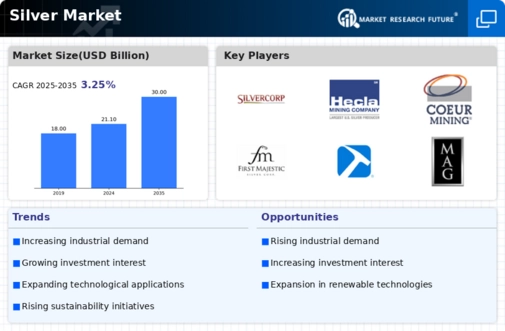
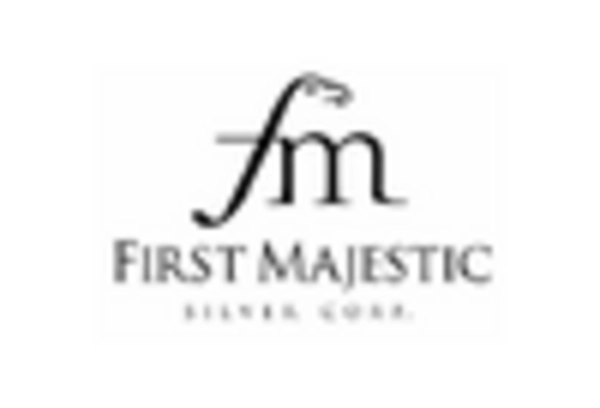
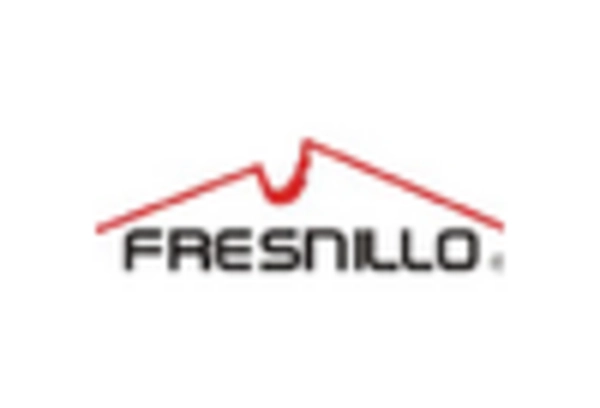
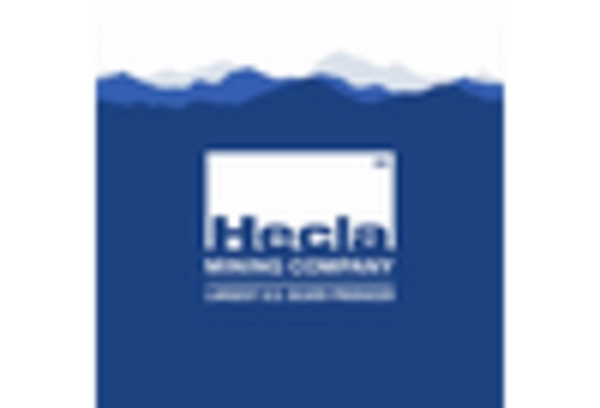
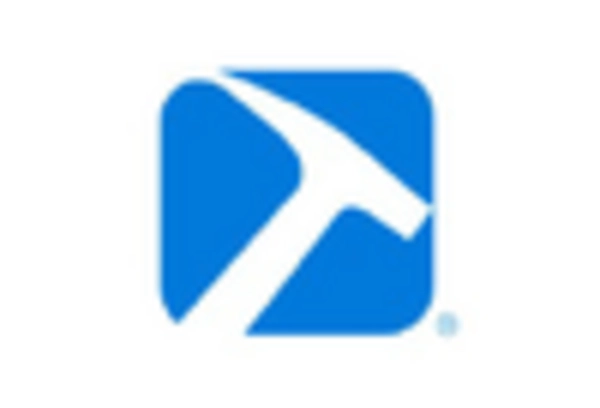
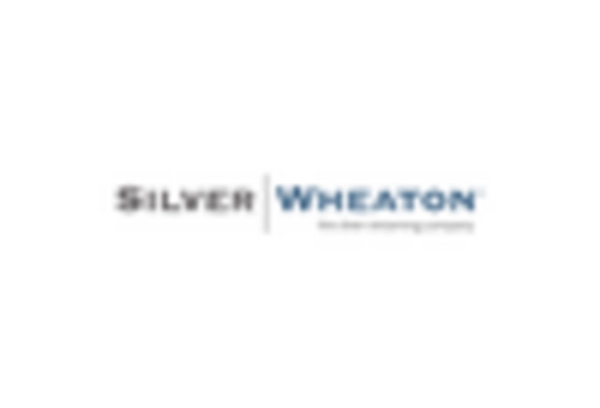
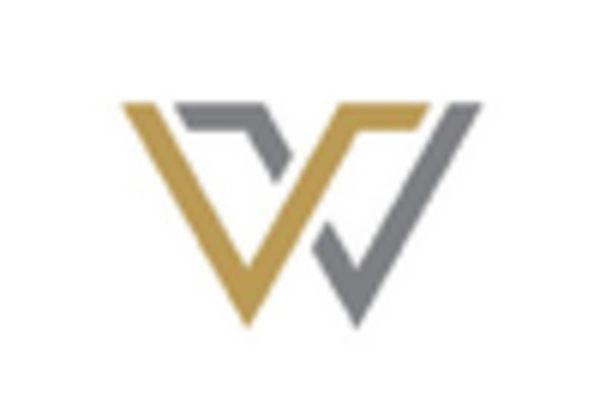









Leave a Comment